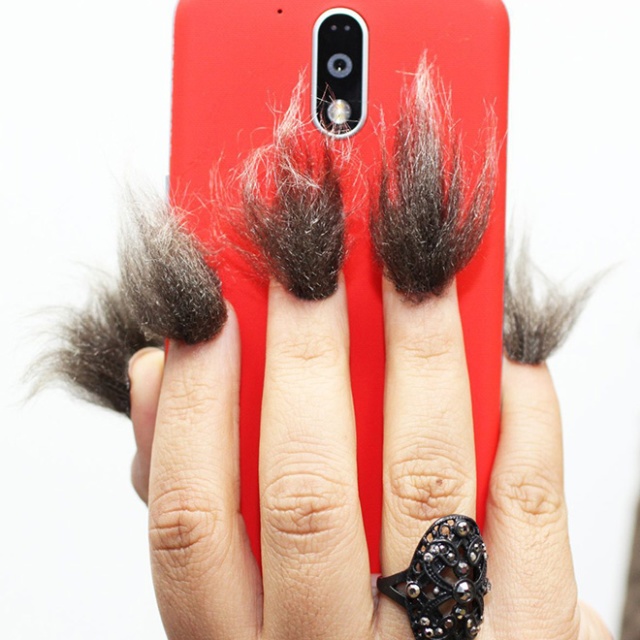Do furry nails stink? If you're a pet owner, you've probably encountered this issue at some point. The odor coming from your furry friend's nails can be unpleasant, but it's often a sign of underlying health concerns that need attention. In this article, we will explore the causes, solutions, and preventive measures for smelly nails in pets, ensuring your furry companion stays healthy and odor-free.
While the smell of furry nails might seem like a minor issue, it can indicate deeper health problems that need to be addressed promptly. Neglecting this issue could lead to discomfort or pain for your pet, making it crucial to understand the root causes and take appropriate action.
This article aims to provide you with all the necessary information to identify, treat, and prevent foul-smelling nails in your pets. From understanding the anatomy of pet nails to learning professional grooming techniques, you'll find everything you need to keep your furry friend's nails in top condition.
Read also:Emiliano Diacuteez The Journey Of A Rising Star
Table of Contents
- Understanding the Anatomy of Pet Nails
- Common Causes of Furry Nails Stink
- Symptoms to Watch For
- Diagnosing the Problem
- Effective Treatment Options
- Preventive Measures
- Grooming Tips for Healthy Nails
- The Role of Diet in Nail Health
- When to Seek Professional Help
- Conclusion and Final Thoughts
Understanding the Anatomy of Pet Nails
Pet nails are more than just claws; they play a vital role in your furry friend's mobility and overall health. Understanding their anatomy is essential to addressing issues like foul-smelling nails. Pet nails consist of a hard outer layer made of keratin, which protects the sensitive inner core called the quick.
Structure of Pet Nails
The quick is rich in blood vessels and nerves, making it crucial to avoid cutting it during nail trimming. Overgrown nails can cause the quick to extend, making trimming more challenging and painful for your pet. Regular maintenance is key to keeping the quick at a manageable length.
Significance of Nail Health
Healthy nails contribute to your pet's overall well-being. When nails become overgrown or infected, it can lead to discomfort, difficulty walking, and even lameness. By maintaining proper nail health, you ensure your pet remains active and pain-free.
Common Causes of Furry Nails Stink
The unpleasant odor from your pet's nails can stem from various causes, ranging from infections to hygiene issues. Identifying the root cause is the first step in addressing the problem effectively.
Bacterial and Fungal Infections
- Bacterial infections often result from nail injuries or cuts, leading to a foul smell.
- Fungal infections can develop in damp environments, causing a musty odor.
Hygiene and Environment
- Poor hygiene practices, such as infrequent nail cleaning, can contribute to the smell.
- Living in a damp or unsanitary environment increases the risk of nail infections.
Symptoms to Watch For
Recognizing the symptoms of smelly nails in pets is crucial for timely intervention. Here are some signs to look out for:
- Strong, unpleasant odor emanating from the nails.
- Redness, swelling, or discharge around the nail bed.
- Licking or biting at the paws excessively.
- Difficulty walking or limping.
Diagnosing the Problem
If you suspect your pet's nails are the source of an unpleasant smell, it's essential to consult a veterinarian for a proper diagnosis. They may perform the following:
Read also:Exploring Travel Options Greyhound Bus Cleveland
Physical Examination
A thorough examination of the nails and surrounding areas can reveal signs of infection or injury.
Lab Tests
In some cases, lab tests such as cultures or microscopic examinations may be necessary to identify the specific bacteria or fungus causing the issue.
Effective Treatment Options
Treating smelly nails in pets involves addressing the underlying cause and alleviating the symptoms. Here are some treatment options:
Medications
- Antibiotics for bacterial infections.
- Antifungal medications for fungal infections.
Topical Treatments
Topical solutions, such as medicated ointments or sprays, can help reduce odor and promote healing.
Preventive Measures
Preventing smelly nails in pets involves adopting good hygiene practices and regular nail maintenance. Consider the following tips:
- Trim your pet's nails regularly to prevent overgrowth.
- Keep the paws clean and dry, especially after outdoor activities.
- Avoid exposing your pet to damp or unsanitary environments.
Grooming Tips for Healthy Nails
Proper grooming plays a significant role in maintaining healthy nails and preventing unpleasant odors. Here are some grooming tips:
Proper Nail Trimming Techniques
Use high-quality nail clippers designed for pets and trim the nails carefully to avoid cutting the quick.
Regular Paw Cleaning
Clean your pet's paws regularly using a mild pet-safe cleanser to remove dirt and debris.
The Role of Diet in Nail Health
A balanced diet rich in essential nutrients supports overall nail health in pets. Ensure your furry friend's diet includes:
- Proteins for nail strength and growth.
- Vitamins and minerals for nail health.
When to Seek Professional Help
While many nail issues can be managed at home, some cases require professional intervention. Consult a veterinarian if:
- The odor persists despite home treatments.
- Your pet shows signs of pain or discomfort.
- There is visible swelling or discharge around the nails.
Conclusion and Final Thoughts
Furry nails stink can be an unpleasant issue, but with proper understanding and care, it can be effectively managed. By addressing the root causes, adopting good hygiene practices, and seeking professional help when needed, you can ensure your pet's nails remain healthy and odor-free.
We encourage you to share your experiences and tips in the comments section below. Don't forget to explore other articles on our site for more pet care advice. Together, let's keep our furry friends happy and healthy!
Sources:
- AVMA (American Veterinary Medical Association)
- PetMD
- Merck Veterinary Manual

